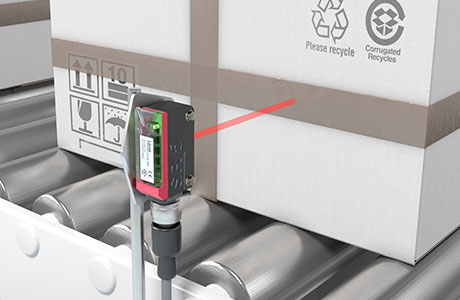Key Takeaway
Photoelectric sensors are crucial for automotive applications. They detect vehicles’ presence and monitor traffic flow, playing a vital role in traffic management systems. They can also measure speed, direction, and vehicle dimensions.
These sensors improve road safety by providing real-time data for traffic control and toll collection systems. They ensure accurate monitoring, enhancing the efficiency of transportation infrastructures and supporting smarter vehicle management.
Key Roles of Photoelectric Sensors in Automotive Manufacturing
In automotive manufacturing, photoelectric sensors play a pivotal role by ensuring precision and enhancing efficiency in various processes. From detecting small components to monitoring the flow of parts on assembly lines, these sensors are the backbone of modern automated manufacturing. Their primary function is to detect objects, measure distances, and ensure that everything on the production line moves as it should.
One key application is in quality control. Photoelectric sensors are used to verify the alignment, size, and shape of car parts. This ensures that only correctly assembled parts make it to the next stage of production, reducing waste and rework.

Enhancing Vehicle Safety with Photoelectric Sensors
Vehicle safety is a major focus in the automotive industry, and photoelectric sensors contribute significantly to improving it. These sensors are integrated into various safety systems in modern cars, including advanced driver assistance systems (ADAS) and emergency braking systems. They work by detecting obstacles or changes in the environment, allowing the vehicle to react accordingly.
For example, photoelectric sensors can detect objects in the vehicle’s blind spots, helping prevent accidents during lane changes. In more advanced applications, they can measure the distance between the car and surrounding objects, enabling automatic braking when necessary. This is especially critical in urban environments where traffic is dense and unpredictable.
Furthermore, these sensors play a key role in features like automatic parking assistance, where precise object detection and distance measurement ensure that the car parks without human intervention. By improving these systems, photoelectric sensors are directly contributing to reducing accidents and saving lives, making them an indispensable component of modern vehicle safety technologies.
How Sensors Improve Precision in Automated Assembly Lines
Precision is paramount in the automotive industry, and automated assembly lines rely heavily on photoelectric sensors to maintain that precision. These sensors ensure that every component is placed accurately, and the assembly process runs smoothly without any errors. In fact, they are often positioned at multiple points along the assembly line to continuously monitor the production process, checking for defects or misalignments.
Take, for instance, the process of assembling engines or other intricate car parts. Photoelectric sensors detect whether each part is in its correct position before allowing the next step of the assembly process to proceed. If a part is missing or misaligned, the system automatically halts, preventing further errors and ensuring that only perfect assemblies move forward. This leads to significant cost savings and better product quality.
The ability to detect even the smallest misalignment or defect ensures that manufacturers can maintain high levels of quality control. Additionally, by reducing the need for manual inspections, these sensors streamline the production process, speeding up output while maintaining precision.
Use of Photoelectric Sensors in Driver Assistance Systems
In modern vehicles, driver assistance systems have become standard features, and photoelectric sensors are crucial to their functioning. From adaptive cruise control to lane departure warnings, these sensors help enhance the driving experience by adding layers of automation and safety.
For example, in adaptive cruise control systems, photoelectric sensors monitor the distance between vehicles on the road. By detecting when a vehicle is too close, the system automatically adjusts the speed of the car to maintain a safe following distance. In other applications, sensors detect lane markings on the road, alerting drivers when they unintentionally drift out of their lane—a feature that has significantly reduced lane departure accidents.
Photoelectric sensors are also integral to systems like collision avoidance and pedestrian detection. By constantly scanning the surroundings, these sensors can identify potential hazards, even in low visibility conditions, and prompt the car to take corrective actions, such as braking or steering adjustments. These technologies not only improve safety but also create a more comfortable driving experience by reducing the mental strain on the driver.
The Future of Photoelectric Sensors in Autonomous Vehicles
Autonomous vehicles represent the future of transportation, and photoelectric sensors will be at the core of this transformation. As vehicles move towards complete automation, sensors will be responsible for detecting everything in the car’s environment, from other vehicles to pedestrians and obstacles on the road.
In autonomous vehicles, the accuracy and reliability of sensors are paramount. They need to work in real-time, processing vast amounts of data and making split-second decisions. Future advancements in photoelectric sensor technology will likely focus on increasing their range and sensitivity, allowing them to detect objects even in adverse weather conditions or complex urban environments.
Another area of innovation will be in the integration of these sensors with artificial intelligence and machine learning systems, enabling the vehicle to learn from its surroundings and adapt to new situations. This will significantly enhance the safety and efficiency of autonomous vehicles, bringing us closer to fully self-driving cars. The future holds immense potential for photoelectric sensors as they continue to evolve, paving the way for safer, smarter, and more efficient transportation systems.
Conclusion
Photoelectric sensors have become indispensable in the automotive industry, from enhancing vehicle safety to ensuring precision on assembly lines. Their versatility, reliability, and ability to integrate with modern technology make them a crucial component in automotive manufacturing and vehicle systems. As cars become more automated and autonomous vehicles begin to dominate the roads, the role of these sensors will only grow. They are not just a part of the present but are driving the future of automotive innovation. As the automotive industry continues to evolve, photoelectric sensors will remain at the forefront, ensuring safer, more efficient, and technologically advanced vehicles.
